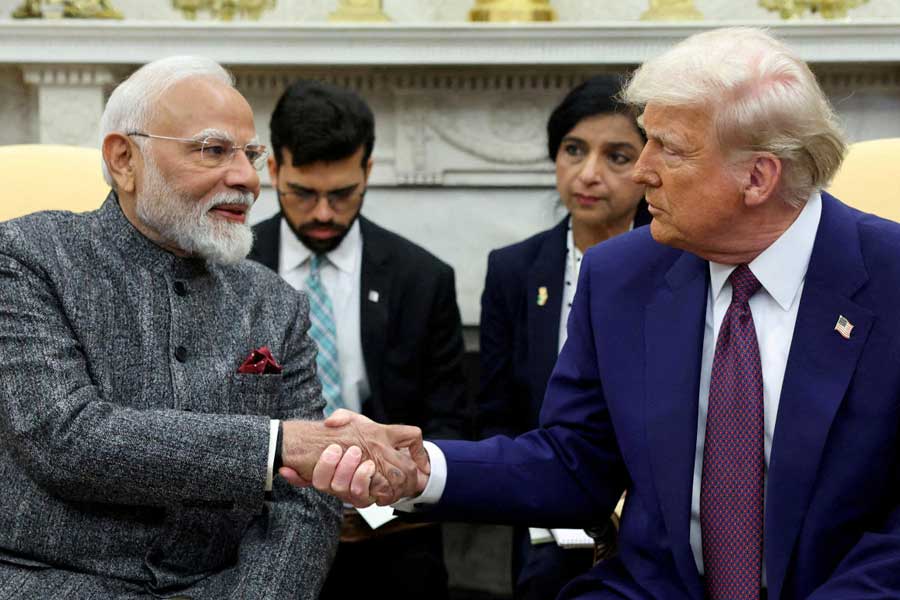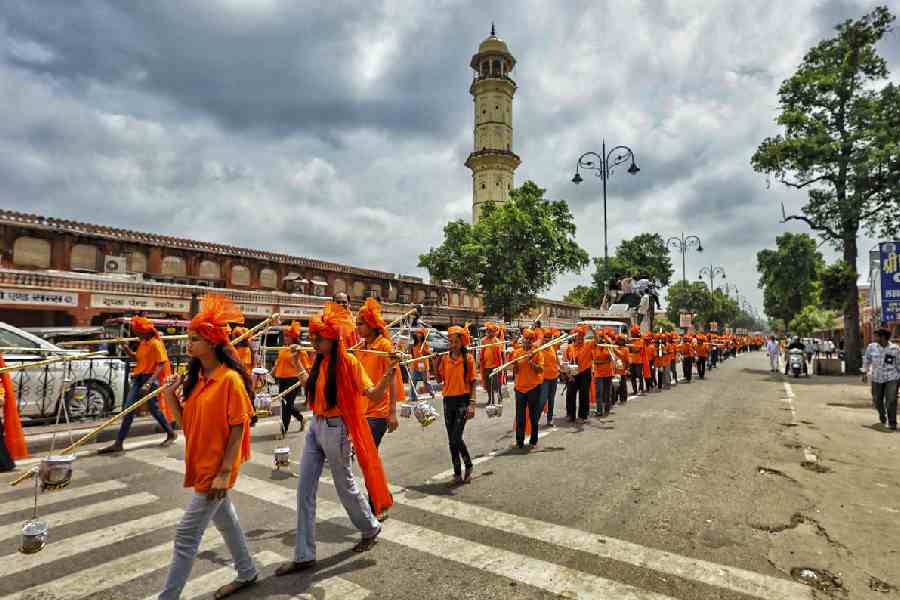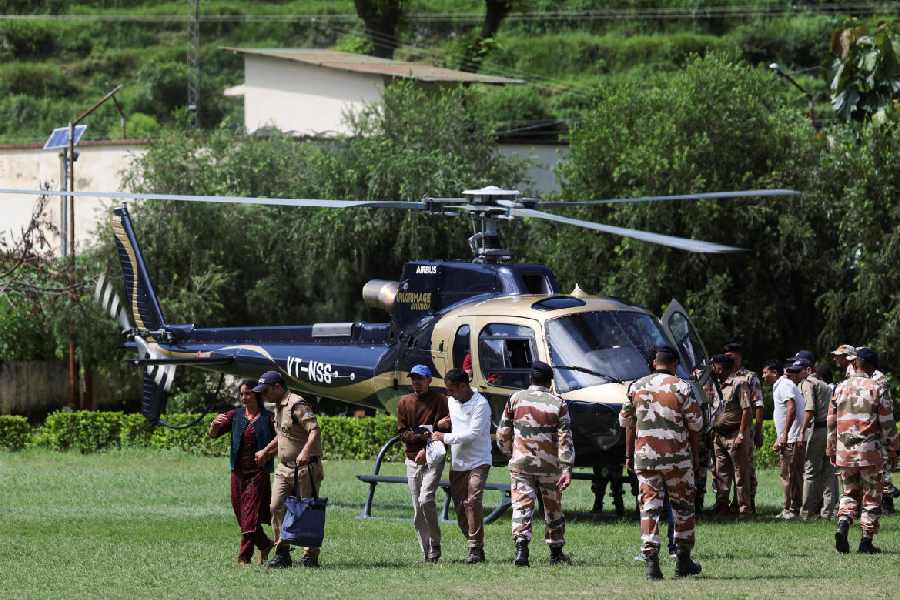 |
When Praful Aggarwal heard about his sister’s murder, he couldn’t fathom who had killed her. His suspicions shifted from robbers to the milkman to the newspaper vendor. “We assumed it was a murder for gain,” recalls Aggarwal, a Lucknow-based businessman. His sister, Priyanka Gupta, a mathematics teacher at Delhi Public School, Bangalore, was found dead by her husband Satish Gupta, when he returned from his morning jog, earlier this month. She had been strangled and then her throat slit.
But Aggarwal got the whodunit all wrong. Police investigations revealed that Priyanka was killed by her husband, a human resource manager at Infosys, Bangalore. He told the police that he was angry with his wife because she couldn’t get along with his parents.
For Aggarwal, this came as a bolt from the blue. “We could not believe Satish could kill. He seemed a mild man. And the couple had been happy together in the last few months,” says Aggarwal. But the happy-couple image had been carefully constructed by Satish to mislead investigation. “A week before the murder he put together a collage of their photographs. He called my mother, saying he wanted to gift Priyanka some jewellery and a car,” says Aggarwal.
Priyanka’s family is in trauma. “Had an outsider committed the murder, we could have lived with it,” feels Aggarwal.
Old theories — which said that criminals are uneducated and unemployed — clearly don’t hold good anymore. It’s people like us (PLUs) who are picking up kitchen knives for the wrong reasons. “Their violence is mostly directed at people they are in close relationships with,” says Alok Kumar, joint commissioner of police, Bangalore Police, adding that such incidences have been on the rise in the city in the last five years.
 |
 |
| GORY END: Naveena being taken away and (below) the corridor in Karnataka High Court where she was stabbed |
Take the shocking case that occurred in Karnataka High Court in Bangalore last month. The post-lunch session was about to start, and Subramaniam Jois, a senior counsel, stood in a first floor corridor mentally going over his case details. Two lawyers — a man and woman — were talking in whispers at the other end of the empty corridor. Suddenly, Jois heard the lady lawyer screaming. “When I reached her, I saw her throat had been slit by the man she was talking to. As I held her, he stabbed her on the chest and ran away,” recalls Jois, adding that she was dead by the time he got her a glass of water. Jois later learnt that the victim, Naveena, had joined the high court three months back. When she refused to marry fellow lawyer Rajappa because she wanted to focus on her career, he killed her.
When the police arrested Rajappa and investigated the case, they found that the lawyer was known to be quiet and hardworking. “His colleagues said he never displayed aggression and was doing well in his work,” says G. Ramesh, deputy commissioner of police (central division), Bangalore Police.
Sociologist Shiv Visvanathan believes that upwardly mobile professionals like Satish Gupta and Rajappa are no longer unlikely criminals — it is becoming increasingly likely that they will kill. “This new generation of criminals has everything, but they want more. They want more money, more sex, bigger cars and the other man’s wife. They are criminals because of greed, not need,” he explains.
Visvanathan adds that there is an increasing tolerance for deviant behaviour in India. “There is a lot of white collar crime happening. People feel they can get away with anything,” he says.
Take crime in Delhi. In the last decade, the share of murders by hardcore criminals has decreased from 15 per cent to eight per cent of the total number of such crimes. “About half the murders are committed by people known to the victims. And the killers are all unexpected people — working professionals, businessmen, housewives, students,” says a Delhi police official.
It’s no different in other cities. In March 2008, an IT professional with Infosys, Bangalore, Amit Budhiraj smothered his wife to death because he suspected her of being close to a colleague. He then hanged himself. Again, Mumbai-based television producer Neeraj Grover’s body was hacked to pieces by actress Maria Monica Susairaj and her fiancé, navy officer Emile Jerome, and dumped on a highway.
In 2007, when Mumbai model Moon Das broke her engagement with a Rourkela-based businessman Avinash Patnaik, he drove to Mumbai and shot her mother and uncle dead. In 2006, Tania Banerjee, an employee of Aviva’s business process outsourcing (BPO) outfit in Bangalore, was murdered by her boyfriend, an IT professional, who objected to her friendship with a male colleague.
Experts believe that relationships going awry have become a reason to kill. There is a thin line between love and hate in urban relationships, says P.S. Murthy, psychologist at Bangalore’s Manipal Hospital. “Relationships between busy professionals are souring because of emotional and communication gaps. Sometimes things get so bad that love is replaced by hatred and a sense of vengeance,” says Murthy. At this stage, people lose their sense of logic and can even kill, he explains.
Dayal Mirchandani, founder, Behavioural Science Foundation, Mumbai, counselled one such couple last year. Arpit Arora and his wife Aparna — corporate professionals in Mumbai — had a stormy marriage. The bitterness peaked when Aparna threatened to sue her husband for harassment. Arpit decided to bump her off. “Aparna took a local train to work every day. Arpit paid some people to push her in front of an approaching train as she waited on the platform,” recalls Mirchandani. However, the plan was foiled as some people pulled Aparna from the railway track before she got crushed by an oncoming train.
Mirchandani finds that the stress of urban life is driving people to commit crime. “Life has become a pressure cooker. Some people don’t have the ability to cope with stress and hit back in unexpected ways,” he explains.
Rajat Mitra, head, Swanchetan, a Delhi-based non governmental organisation that works with juvenile delinquents, has noticed an alarming trend — rich youth kill for thrill. “We get about 15 cases every year of children of rich parents committing murder. In 80 per cent of these cases, we find that the youth get a high from killing,” says Mitra.
When Ravi Kumar, a young gym owner in Bangalore, killed a city paediatrician, family friend Ajit Bhide was shocked. “Kumar came from a regular, middle-class family — an unlikely breeding ground for criminals,” says Bhide, psychiatrist, Medinova Hospital, Bangalore.
But Ravi broke stereotypes. On April 9 this year, Ravi asked Sharath Kumar, a member of his gym, to look up his mother who was ill. At his house, Ravi, his girlfriend and seven others kidnapped the doctor and demanded a ransom. After receiving the ransom, they killed him.
Clearly, when it comes to murder, you can’t count PLUs out.










